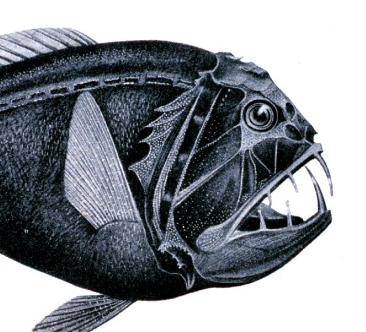Article: Goldstein, M., et al. (2014). “Relationship of diversity and habitat area in North Pacific plastic-associated rafting communities.” Marine Biology: 1-13.
doi: 10.1007/s00227-014-2432-8
Background:
From fish to invertebrates, many species have long used floating, oceanic rafts as a means of transport or as an oasis in the middle of the barren, open-ocean. Natural rafts exist in the form of clumped seaweeds, woody debris, and pumice (Fig 1). These rafts provide habitat, and sometimes food for communities of marine organisms. Scientists studying these communities have been able to describe the diversity of organisms and have been able to apply classic ecological theory. The theory of island biogeography, as described by MacArthur and Wilson, states that diversity on an island is positively correlated with the size of the island; bigger islands mean more diverse islands. The diversity on these islands is maintained by constant local extinction and immigration and oceanic rafts have been shown to exhibit these patterns.

In the 1960s a new, human-created, raft was detected. Plastic debris, such as bottles, bags, and microplastics, entering the ocean can aggregate and form rafts (Fig 2). Despite being “unnatural,” floating plastic debris can provide refuge similar to rafts composed of wood or seaweed. Previous research has found that patches of plastic debris can aide in the spread of invasive species, but very little work has looked into the communities associated with plastic debris rafts. In this study, researchers investigated the types of organisms and assemblages utilizing rafts of plastic debris. Researchers also put the theory of island biogeography to the test, looking at community diversity based on the size of the debris.

The Study:
Over the course of 3 years, researchers collected data from 3 cruises in the north Pacific (Fig 3). Organisms associated with the plastic debris were sampled with dip nets and then preserved for later identification. The sizes of debris objects were measured and the number of taxa (or unique species) was counted.


Overall, researchers examined 242 debris objects and found 95 different organisms representing 11 different phyla (Fig 4). Of the 95 documented taxa, 25 had not previously been identified as “rafting” species based on previous studies of assemblages from natural rafts. Many of the organisms found are known to be prolific and successful rafters, such as bryozoans and crustaceans. One organism that caught the eye of researchers was a ciliate (Halofolliculina spp.) that is a known pathogen to corals (Fig 5). This organism was thought to be restricted to the Indian Ocean but is now being seen in Hawaiian corals.

Researchers found a positive correlation between the size of the debris object and the number of species found on the object (Fig 6), falling in line with the theory of island biogeography. Work still needs to be done, however, looking into the population dynamics of plastic rafting species.

Significance:
The ability for communities to utilize plastic debris as refuge and as a vehicle for dispersal speaks to the adaptability of species to human pollution. Take this with a grain of salt, though, plastics are not natural and even though they may provide habitat for diverse communities, more research needs to be done. Many marine species have adapted to make use of natural rafts making their dispersal natural. But this study showed one quarter of the species documented had not been described as a rafting species, meaning there is now a mechanism for transport for these species, many of which are successful invaders. This could lead to increases in invasions. Nonetheless, the positive correlation between debris size and species diversity and the subsequent link to the theory of island biogeography is of interest to ecologists and merits further investigation.
Postdoctoral Researcher, Claremont McKenna College
I am currently a postdoc at Keck Sciences, Claremont McKenna College. I work with Dr. Sarah Gilman, measuring and modeling energy budgets in intertidal species. I am a climate scientist and marine community ecologist and my PhD (University of Rhode Island) focused on how ocean acidification and eutrophication, alters coastal trophic interactions and species assemblages.
I love bad jokes and good beer.

One thought on “One species’ trash is another species’ refuge: Investigating the biodiversity associated with floating plastic debris.”